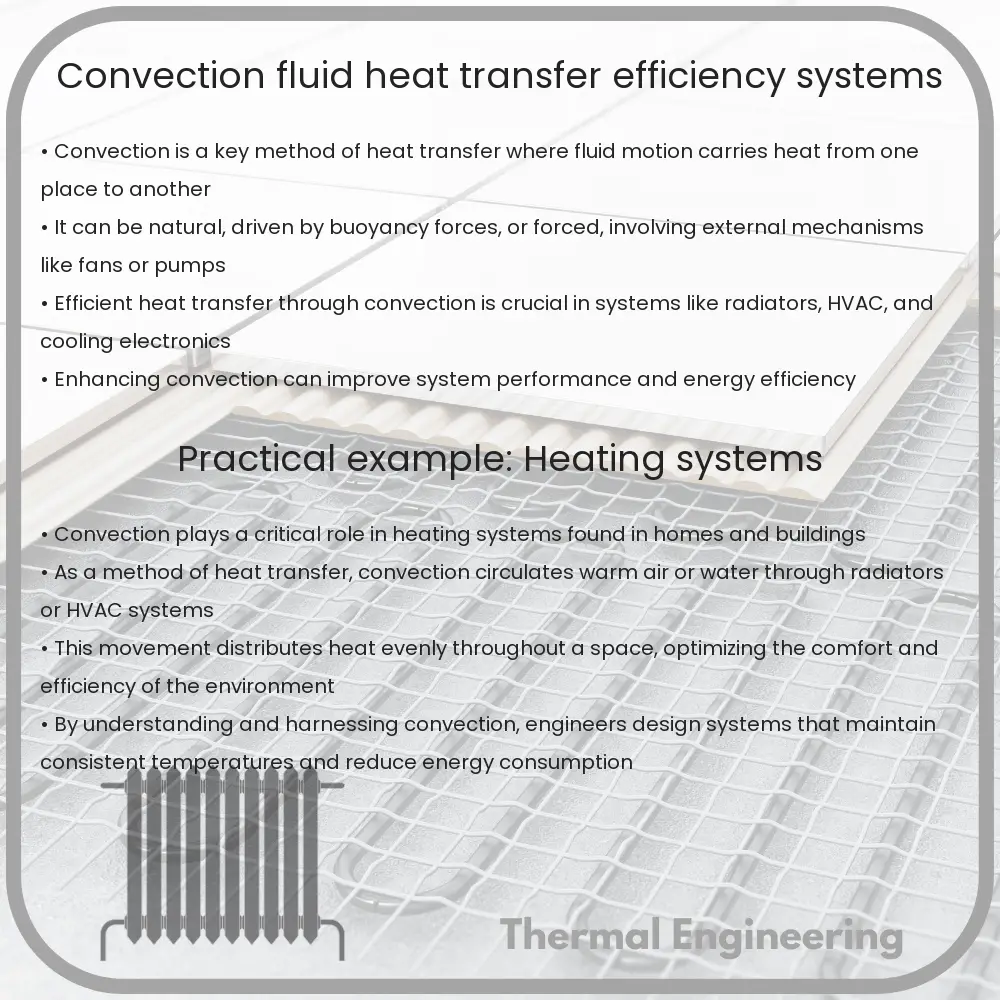Learn about convection in fluids, the process of heat transfer via the movement of liquids and gases, crucial in many engineering applications.

Understanding Convection in Fluids
Convection in fluids is a primary mechanism of heat transfer where heat is transported by the movement of fluids such as liquids and gases. This process plays a critical role in various engineering applications ranging from the heating and cooling systems in buildings to industrial processes like power generation and electronic device cooling.
How Convection Occurs
Convection heat transfer occurs when a fluid is heated, it expands and its density decreases. The less dense heated fluid rises, and cooler, denser fluid takes its place. This cycle creates a continuous motion in the fluid, known as a convection current. The efficiency of convection depends significantly on the fluid properties, the temperature difference in the fluid, and the shape and orientation of the heated surface.
Types of Convection
- Natural Convection: This occurs due to natural buoyancy forces that arise from density differences caused by temperature variations in the fluid. No external force (like a pump or fan) is involved.
- Forced Convection: In this case, external mechanisms such as fans, pumps, or blowers are used to facilitate the movement of the fluid, enhancing the heat transfer process.
Mathematical Description of Convection
The rate of heat transfer by convection can be expressed using Newton’s Law of Cooling:
Q = h * A * (Ts – T∞)
Where:
- Q is the rate of heat transfer in watts (W).
- h is the convective heat transfer coefficient in watts per square meter-kelvin (W/m2K).
- A is the surface area through which heat is being transferred in square meters (m2).
- Ts is the surface temperature in kelvins (K).
- T∞ is the surrounding fluid temperature in kelvins (K).
Factors Affecting Convective Heat Transfer
- Temperature Difference: The greater the temperature difference between the surface and the fluid, the higher the rate of convection heat transfer.
- Surface Area: Larger surface areas facilitate more heat transfer due to increased contact with the fluid.
- Fluid Velocity: In forced convection, higher fluid velocities can enhance heat transfer effectiveness by reducing the thickness of the thermal boundary layer.
- Properties of the Fluid: Fluid viscosity, thermal conductivity, and specific heat capacity all influence how efficiently heat can be transferred by convection.
Applications of Convection
Convection is utilized in a variety of engineering systems to manage thermal energy effectively:
- Heating, Ventilation, and Air Conditioning (HVAC): Systems rely on convection to circulate warm or cool air throughout buildings.
- Automotive Cooling Systems: Use convection to transfer heat away from the engine, typically through a coolant fluid that cycles through radiators.
- Power Plants: Steam generators in power plants use convection to transfer heat from the combustion of fuel to water, generating steam to drive turbines.
- Electronic Devices: Many devices incorporate heat sinks and fans to dissipate heat from components, primarily through forced convection.
Understanding the principles of convection and how it can be controlled and enhanced is essential for designing efficient thermal management systems in various engineering applications.